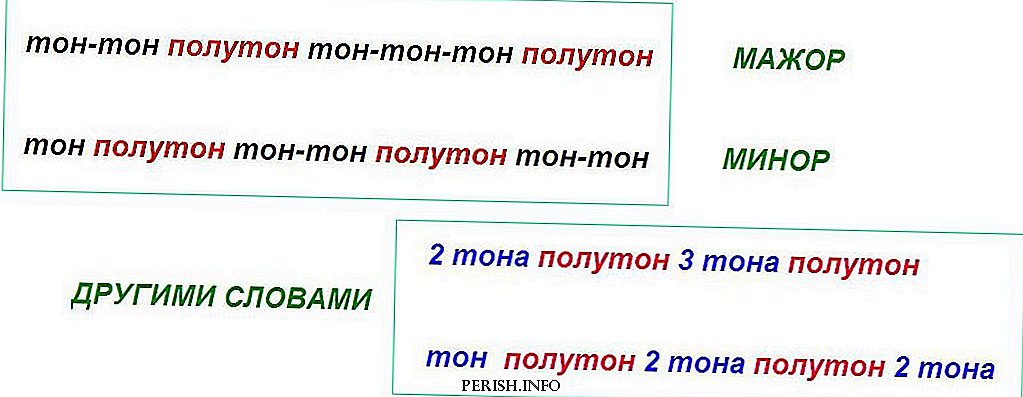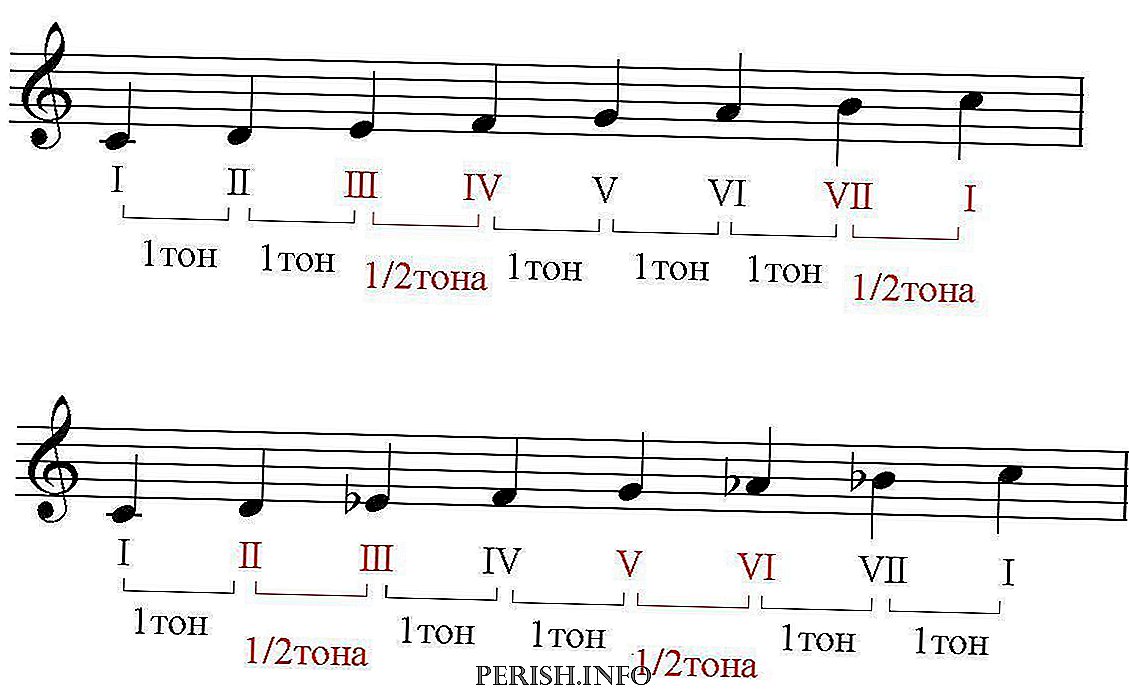
Musical mood - Another concept from musical theory, with which we will meet. Lad in music - is a system of relations of stable and unstable sounds and harmonies, which works for a certain sound effect.
There is a lot of frets in music, now we will consider only the two most common ones (in European music) - major and minor. You have already heard these names, and their banal decoding of the major type is cheerful, life-affirming and joyful, and the minor is sad, elegiac, soft.
These are only approximate characteristics, but in no case are not labels - the music in each of the musical lines can express any feelings: for example, tragedy in the major or some bright feelings in the minor (see, the opposite is true).
Major and Minor - basic frets in music
So let's analyze the major and minor modes. The concept of harmony is closely related to the scales. The major and minor scale are composed of seven musical steps (that is, a note) plus the last, eighth stage repeats the first.
The difference between major and minor is precisely the relationship between the steps of their scale. These steps are separated from one another by a distance of either a whole tone or a semitone. In major, this relationship will be as follows: tone-tone semitone tone-tone-tone semitone (easy to remember - 2 tones semitone 3 tones semitone), in minor - tone semitone tone-tone semitone tone-tone (tone half tone 2 tone half tone 2 tone). Once again we look at the picture and remember:

Now let's look at the one and the other musical mode on a concrete example. For clarity, we construct the major and minor scales from the notes before.

You see that there is a significant difference in the record of major and minor. Play these examples on the instruments - you will find the difference in the sound itself. I will allow myself one small digression: if you do not know how tones and semitones are counted, then refer to the materials of these articles here: “What are the keys of the piano” and “Alteration signs”.
Properties of musical frets
Lad in music there is not just that, it performs certain functions, and one of such functions is the regulation of relations between stable and unstable levels. For major and minor major steps are the first, third and fifth (I, III and V), unstable - the second, fourth, sixth and seventh (II, IV, VI and VII). Steady steps begin and end the melody, if it is written in a major or minor mode. Unstable sounds always tend to steady sounds.
Of particular importance is the first stage - this main stage of musicit has a name tonic. Stable steps together form tonic triadThis is a triad - the identifier of the musical fret.
Other musical frets
The major and minor modes in music are not the only variants of the scale. In addition to these, there are also many other ways characteristic of one or another musical culture or artificially created by composers. For example, pentatonic - Five-step mode, in which any of its steps can play the role of a toner. Pentatonics is extremely widespread in China and Japan.
Let's sum up. We have defined the concept musical mood, we learned the structure of the scales of the major and minor frets, divided the steps of the scales into stable and unstable.
You remembered that tonic is main stage of music, the main steady sound? Fine! Worked well, now you can have a little fun. Look at this cartoon joke.
If you like the material - right now click on the buttons under this text to share knowledge with others! See you again!

Leave Your Comment